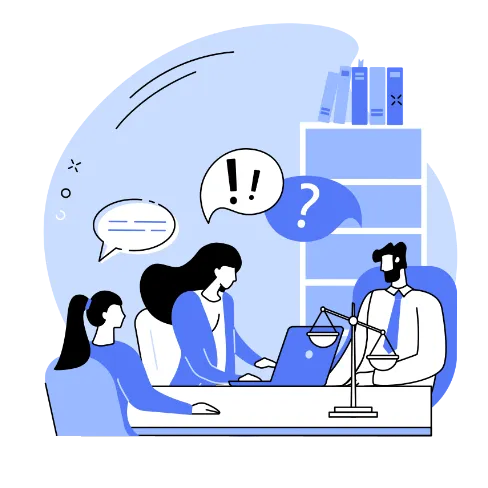Fortify Your Business with
Way2Protect's Ultimate Cybersecurity Shield
Transform cybersecurity from a challenge into your competitive advantage.
Fortify Your Business with Way2Protect's Ultimate Cybersecurity Shield
Transform cybersecurity from a challenge into your competitive advantage.

You find these and other figures in my book Happily Ever Cyber and on Cisa.gov

Find out how to push Cybermonsters away from your private data
With tips to help prevent a cyber attack protecting your family, work environment and yourself:
AS SEEN ON:


Find out how to push Cybermonsters away from your private data
With tips to help prevent a cyber attack protecting your family, work environment and yourself:
AS SEEN ON:

Push Cybermonsters away from your private data.
Subscribe to my newsletter about cybersecurity and cyber safety. New issues every Tuesday.

Push Cybermonsters away from your private data.
Subscribe to my newsletter about cybersecurity and cyber safety. New issues every Tuesday.

Protect those that matters most to you:

Family
Protect your child(ren), teens,
and your parents.

Business Owners
Protect your data, your customer's information, your employees,
and your brand!

Yourself
Have peace of mind online!
International Bestselling & Award-Winning Cyber Safety Author
Identity theft & cyber crime can happen to anyone.




Why choosing us?
In a world full of digital distractions, we understand the importance of cultivating a healthy balance. At Way2Protect, our mission is clear: to be your trusted guide to a conscious and protected online experience, both for you and for what you value most: your family, your business, and your peace of mind.
Way2Protect becomes your fundamental ally in your digital world, providing you with hassle-free security and adapting cybersecurity practices to your routine without sacrificing your time. We facilitate the process, guiding you in the implementation of effective cybersecurity practices to protect your family, your business, and your work teams.
Why choosing us?
In a world full of digital distractions, we understand the importance of cultivating a healthy balance. At Way2Protect, our mission is clear: to be your trusted guide to a conscious and protected online experience, both for you and for what you value most: your family, your business, and your peace of mind.
Way2Protect becomes your fundamental ally in your digital world, providing you with hassle-free security and adapting cybersecurity practices to your routine without sacrificing your time. We facilitate the process, guiding you in the implementation of effective cybersecurity practices to protect your family, your business, and your work teams.

Get the latest news in the Cyber Security World

Mindfulness in the Digital Age: Staying Present and Protected
In a time where our lives are increasingly connected to technology, mindfulness has taken on a new importance. As we navigate the digital landscape, it's crucial to stay aware not only of our immediate surroundings but also of our virtual environment. This article explores how mindfulness can enhance our online safety and overall digital experience.
The Digital Dilemma: Connectivity vs. Consciousness
The digital age has brought us unprecedented connectivity, putting a world of information and communication at our fingertips. However, this constant connection comes at a cost. Many of us find ourselves mindlessly scrolling through social media feeds, reflexively checking notifications, or getting lost in the internet for hours. This unconscious engagement with technology not only affects our productivity and mental health but also leaves us vulnerable to various online threats.
Mindfulness, often associated with meditation and being present in the moment, offers a powerful solution to this digital autopilot mode. By applying mindful practices to our digital interactions, we can foster a more intentional and secure online presence.
1. Conscious Connectivity: Balancing Online and Offline Life
The first step in digital mindfulness is becoming aware of how we use technology. This awareness goes beyond simply tracking screen time; it involves understanding how and why we engage with digital devices and platforms.
For example, think about the habit of reaching for your smartphone first thing in the morning. While it may seem harmless, this routine can set a reactive tone for the entire day, making you respond to external stimuli rather than setting intentional priorities. By practicing mindfulness, you might choose to start your day with a few moments of reflection or meditation before diving into the digital world.
Creating clear boundaries between online and offline activities is also key. This could mean designating tech-free zones in your home, setting specific times for checking emails or social media, or taking regular digital detoxes. By consciously carving out offline spaces and times, you reduce your exposure to potential online threats and cultivate a healthier relationship with technology.
A practical tip is the "30-minute rule": for every 30 minutes spent online, take a 5-minute break to disconnect, stretch, or engage in a brief mindfulness exercise. This simple practice can help reset your focus, reduce digital fatigue, and make you more aware of your online behaviors.

2. Cyber Awareness: Mindful Navigation of the Digital Landscape
Mindfulness plays a crucial role in developing "cyber awareness." This means being alert to potential threats and making deliberate choices about how we interact with digital platforms and share information online.
One aspect of cyber awareness is mindful consumption of online content. In an age of information overload and misinformation, it's easy to passively absorb whatever appears on our screens. However, a mindful approach involves critically evaluating sources, fact-checking before sharing, and being aware of our own biases and emotional reactions to content.
Consider the phenomenon of "doomscrolling" – the habit of continuously consuming negative news despite the psychological toll. A mindful individual might notice this behavior, pause to reflect on its impact, and choose to engage with more balanced or positive content instead.
Another crucial element of cyber awareness is mindful communication. Before posting on social media or sending an email, take a moment to consider the potential consequences and long-term implications of your digital footprint. This pause for reflection can prevent impulsive sharing of sensitive information or reactive responses that you might later regret.
Practical steps to enhance cyber awareness include:
Regularly reviewing privacy settings on social media platforms
Being mindful of phishing attempts by carefully examining email senders and links before clicking
Practicing "digital empathy" by considering how your online actions might affect others
Cultivating a habit of pausing and taking a deep breath before responding to triggering content online
3. Mindful Tech Habits: Cultivating Digital Well-being
Beyond safety concerns, mindfulness can significantly contribute to overall digital well-being. This involves developing habits and practices that allow us to use technology for its benefits while minimizing its negative impacts on our mental and physical health.
One key aspect of digital well-being is managing the constant influx of notifications and information. The average smartphone user receives dozens, if not hundreds, of notifications daily. Each ping or vibration triggers a small dopamine release, creating a cycle of distraction and fragmented attention. A mindful approach to notifications might involve:
Curating which apps are allowed to send notifications
Setting specific times to check and respond to messages
Creating a "notification-free" environment during important tasks or personal time
Another critical area is mindful consumption of social media. While these platforms can offer connection and information, they can also foster comparison, anxiety, and a distorted sense of reality. Mindful social media use might involve:
Regularly auditing your follow list and curating a feed that genuinely adds value to your life
Setting intentional purposes for each social media session (e.g., connecting with friends, seeking information on a specific topic)
Practicing gratitude for positive aspects of your life before engaging with social media to counter comparison tendencies
Lastly, mindful tech habits extend to our physical interactions with devices. This includes being aware of posture while using computers or smartphones, taking regular breaks to prevent eye strain, and creating ergonomic workspaces. It also involves being mindful of the impact of blue light exposure on sleep patterns and implementing practices like using night mode or avoiding screens before bedtime.

Conclusion: Embracing Mindful Digital Citizenship
As we continue to navigate the ever-evolving digital landscape, mindfulness offers a valuable guide. By cultivating awareness of our online behaviors, developing cyber consciousness, and fostering healthy tech habits, we can create a more intentional and secure digital experience.
Remember, digital mindfulness is not about rejecting technology but about engaging with it in a more conscious and purposeful manner. It's about reclaiming our control in the digital world and using technology as a tool for enhancement rather than distraction or harm.
To start your journey of digital mindfulness, consider these actionable steps:
Start your day with a brief mindfulness exercise before checking your devices
Implement regular "tech breaks" throughout your day
Practice the "stop, breathe, reflect" technique before posting or sharing content online
Conduct a weekly review of your digital habits and adjust as necessary
Explore mindfulness apps or guided meditations specifically designed for digital well-being
By integrating these practices into our daily lives, we can foster a healthier, more mindful relationship with technology. In doing so, we not only enhance our personal well-being but also contribute to a more conscious and compassionate digital community. As we move forward in this digital age, let mindfulness be our guide in staying both present and protected in the vast online world.
Live Happily Ever Cyber!

Sandra Estok
Subscribe for more ways to protect what matters most to you against hackers, scammers, and Cybermonsters™



